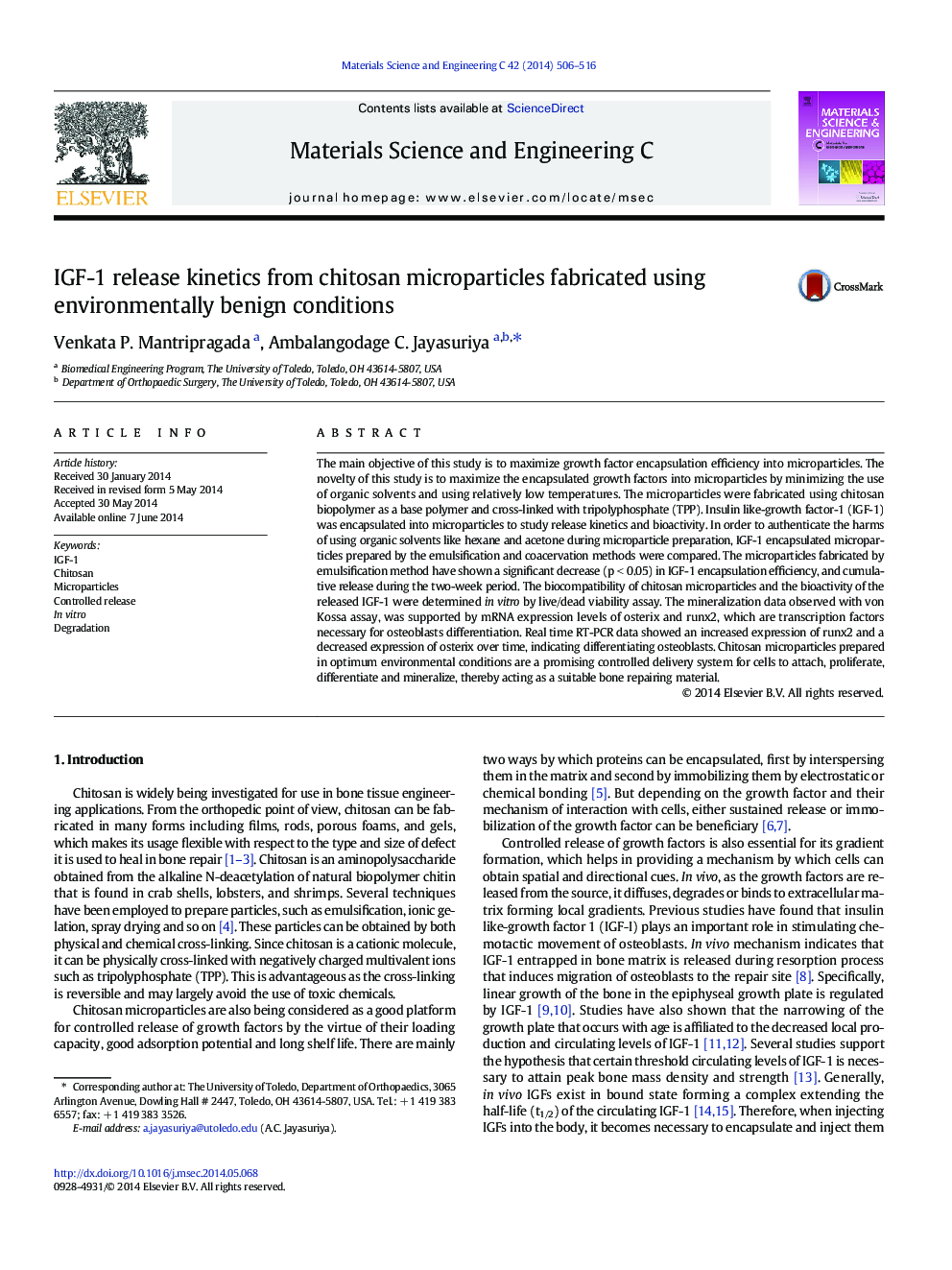| Article ID | Journal | Published Year | Pages | File Type |
|---|---|---|---|---|
| 1428664 | Materials Science and Engineering: C | 2014 | 11 Pages |
•Coacervation chitosan microparticles were biocompatible and biodegradable.•IGF-1 encapsulation efficiency increased with coacervation chitosan microparticles.•Coacervation chitosan microparticles support osteoblast attachment and differentiation.•Coacervation chitosan microparticles support osteoblast mineralization.
The main objective of this study is to maximize growth factor encapsulation efficiency into microparticles. The novelty of this study is to maximize the encapsulated growth factors into microparticles by minimizing the use of organic solvents and using relatively low temperatures. The microparticles were fabricated using chitosan biopolymer as a base polymer and cross-linked with tripolyphosphate (TPP). Insulin like-growth factor-1 (IGF-1) was encapsulated into microparticles to study release kinetics and bioactivity. In order to authenticate the harms of using organic solvents like hexane and acetone during microparticle preparation, IGF-1 encapsulated microparticles prepared by the emulsification and coacervation methods were compared. The microparticles fabricated by emulsification method have shown a significant decrease (p < 0.05) in IGF-1 encapsulation efficiency, and cumulative release during the two-week period. The biocompatibility of chitosan microparticles and the bioactivity of the released IGF-1 were determined in vitro by live/dead viability assay. The mineralization data observed with von Kossa assay, was supported by mRNA expression levels of osterix and runx2, which are transcription factors necessary for osteoblasts differentiation. Real time RT-PCR data showed an increased expression of runx2 and a decreased expression of osterix over time, indicating differentiating osteoblasts. Chitosan microparticles prepared in optimum environmental conditions are a promising controlled delivery system for cells to attach, proliferate, differentiate and mineralize, thereby acting as a suitable bone repairing material.
Graphical abstractFigure optionsDownload full-size imageDownload as PowerPoint slide
